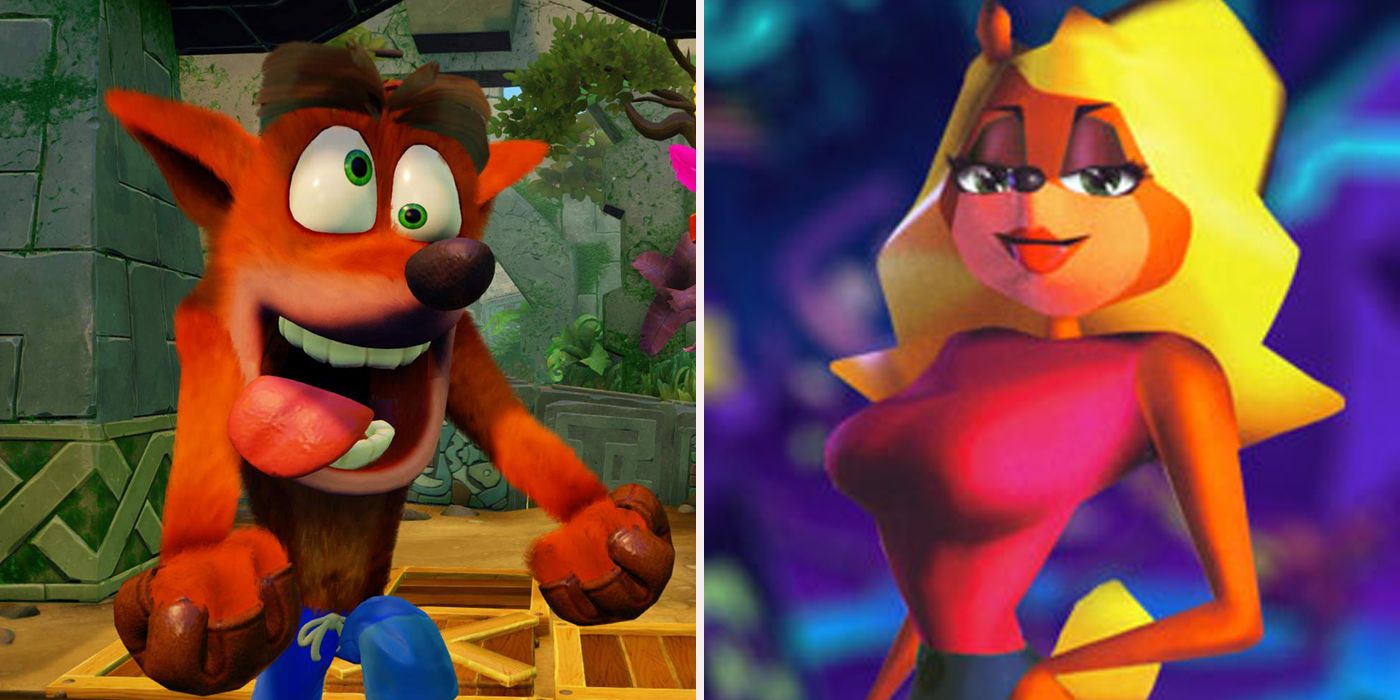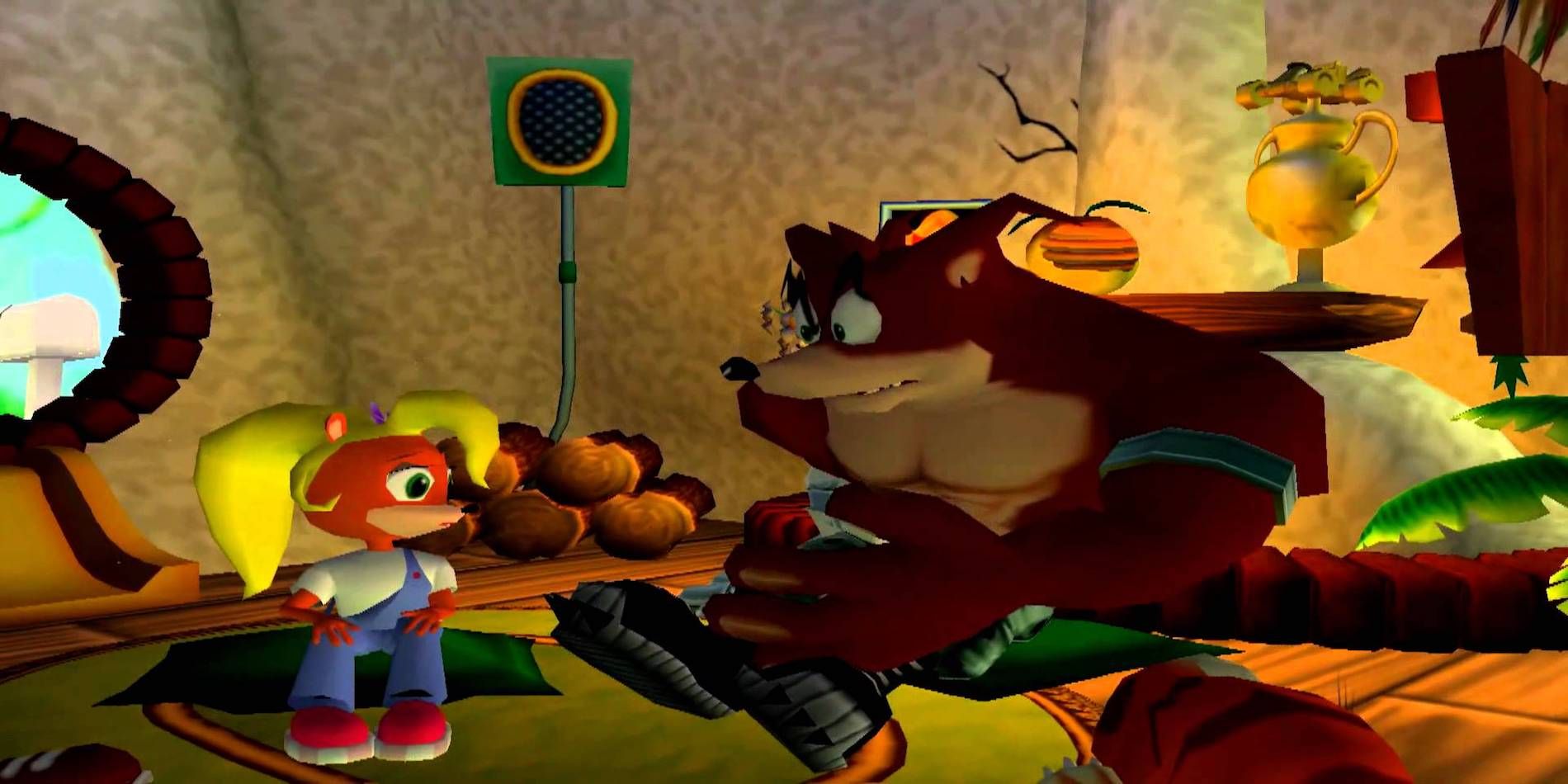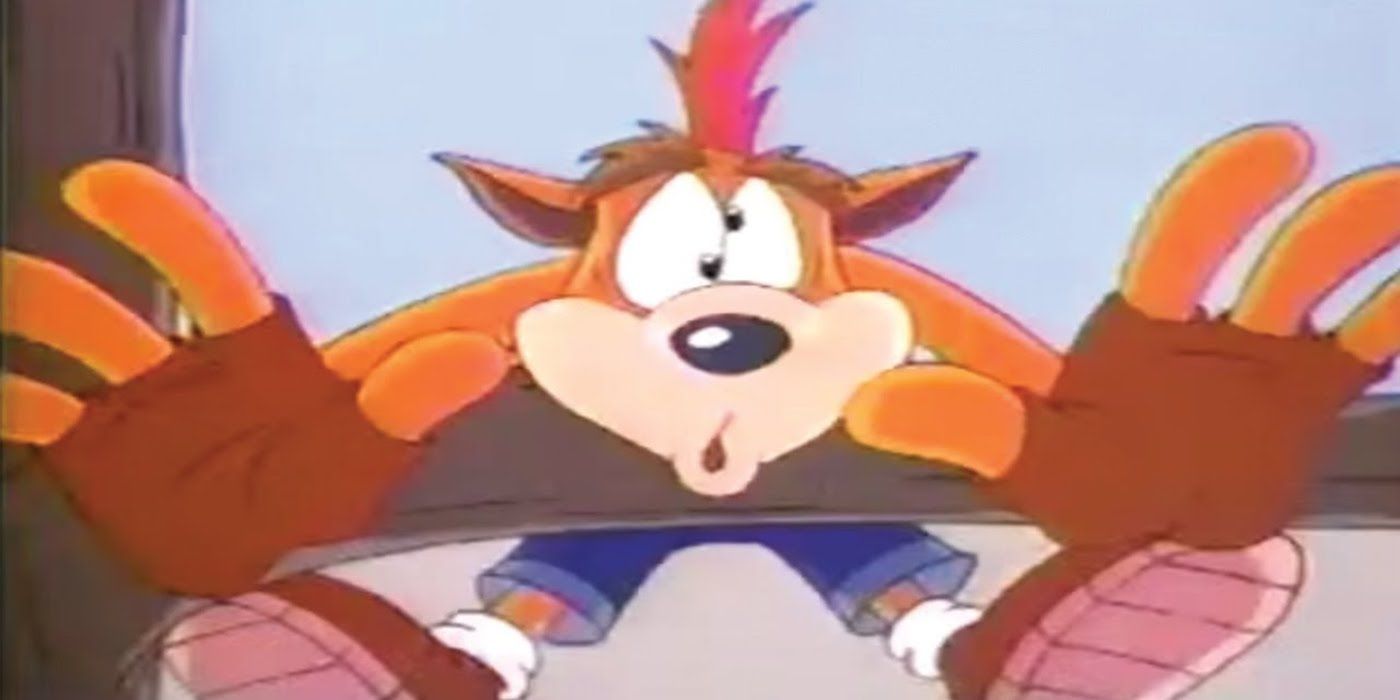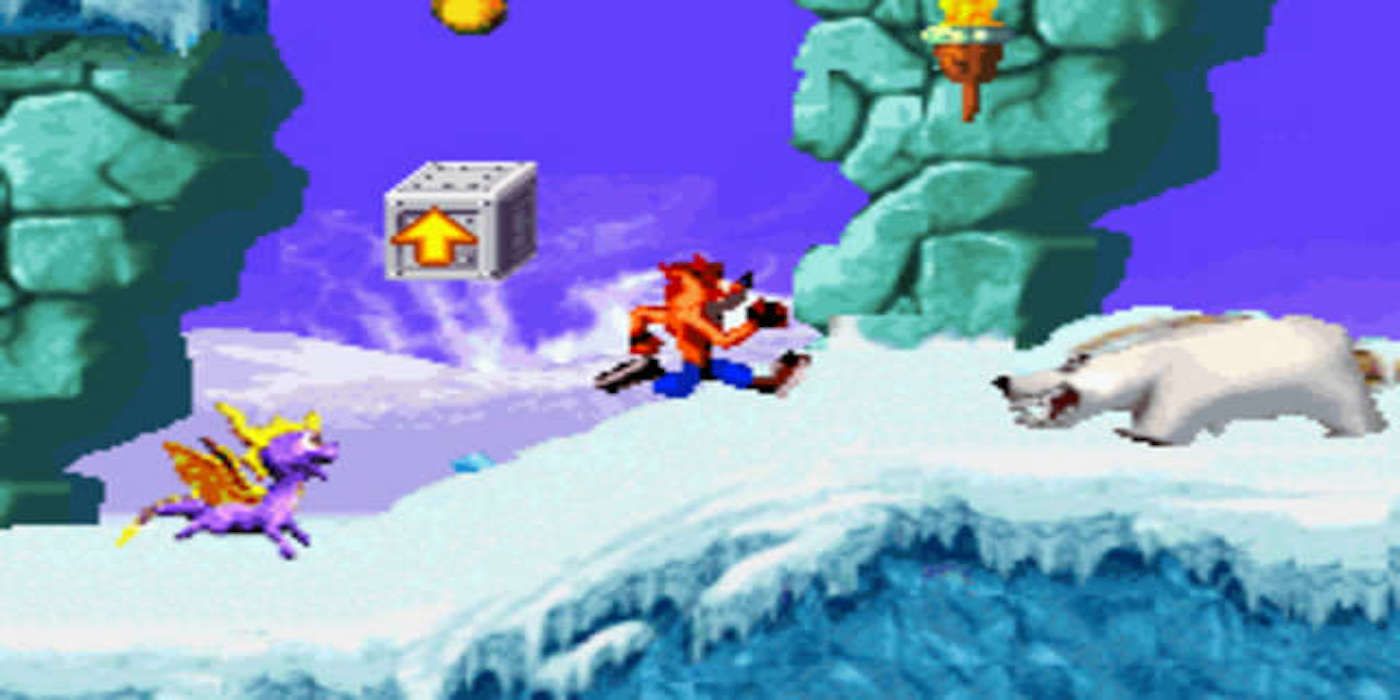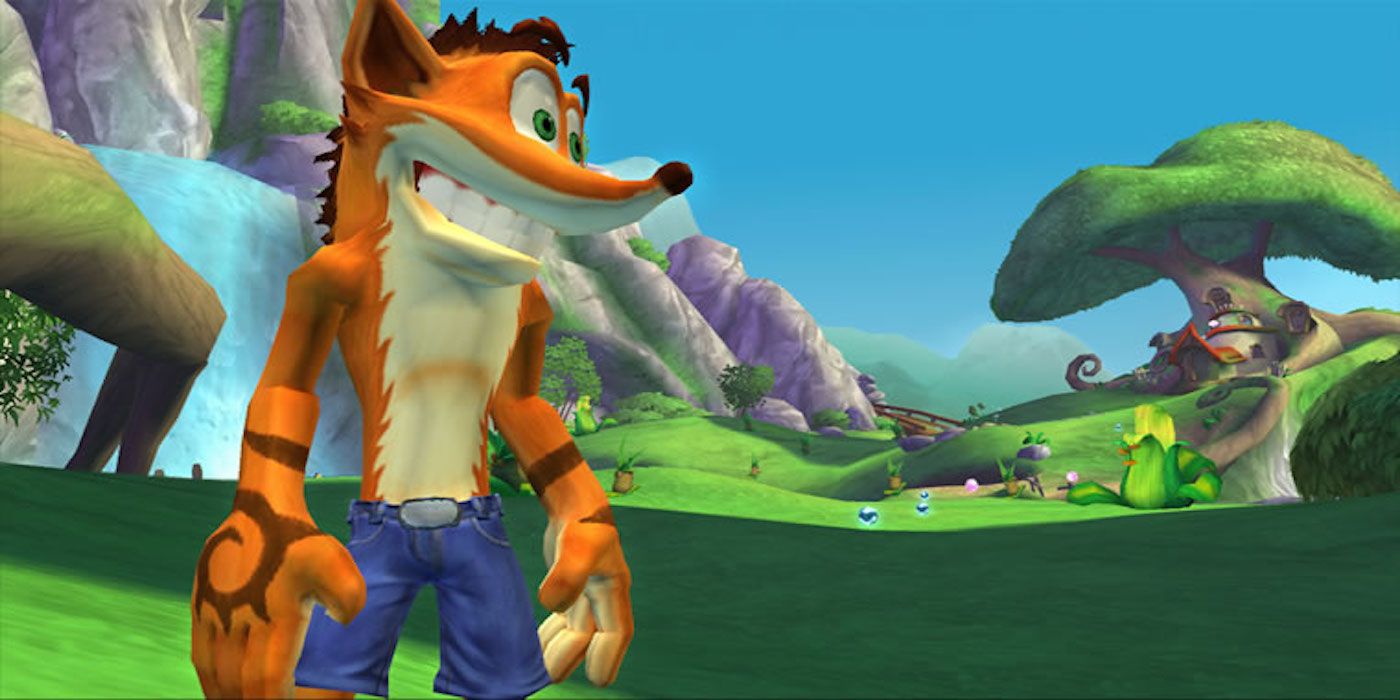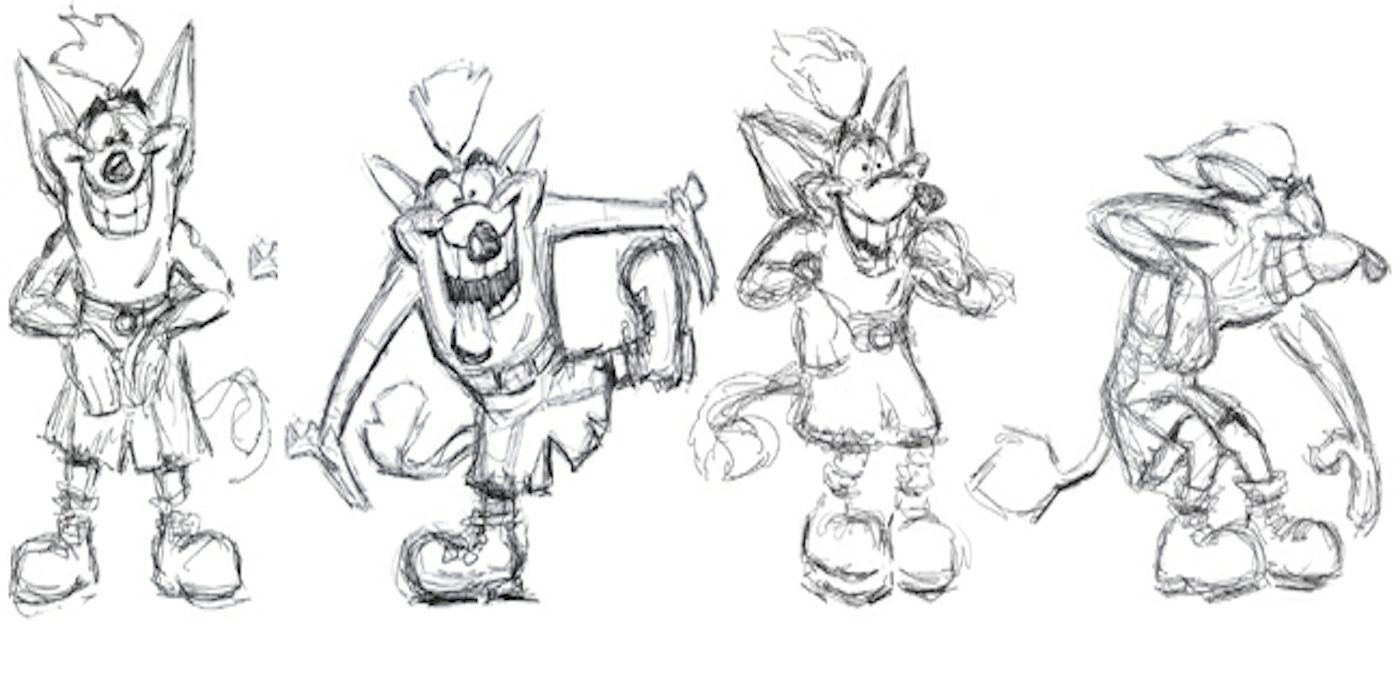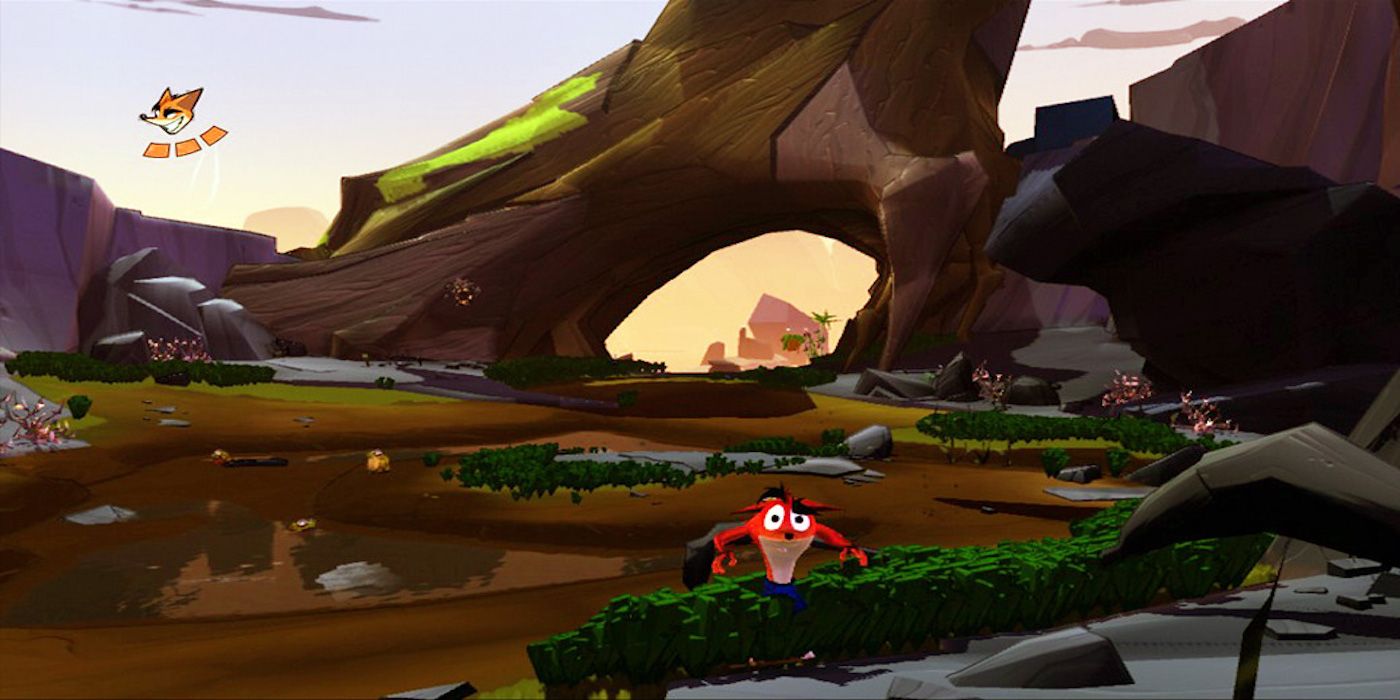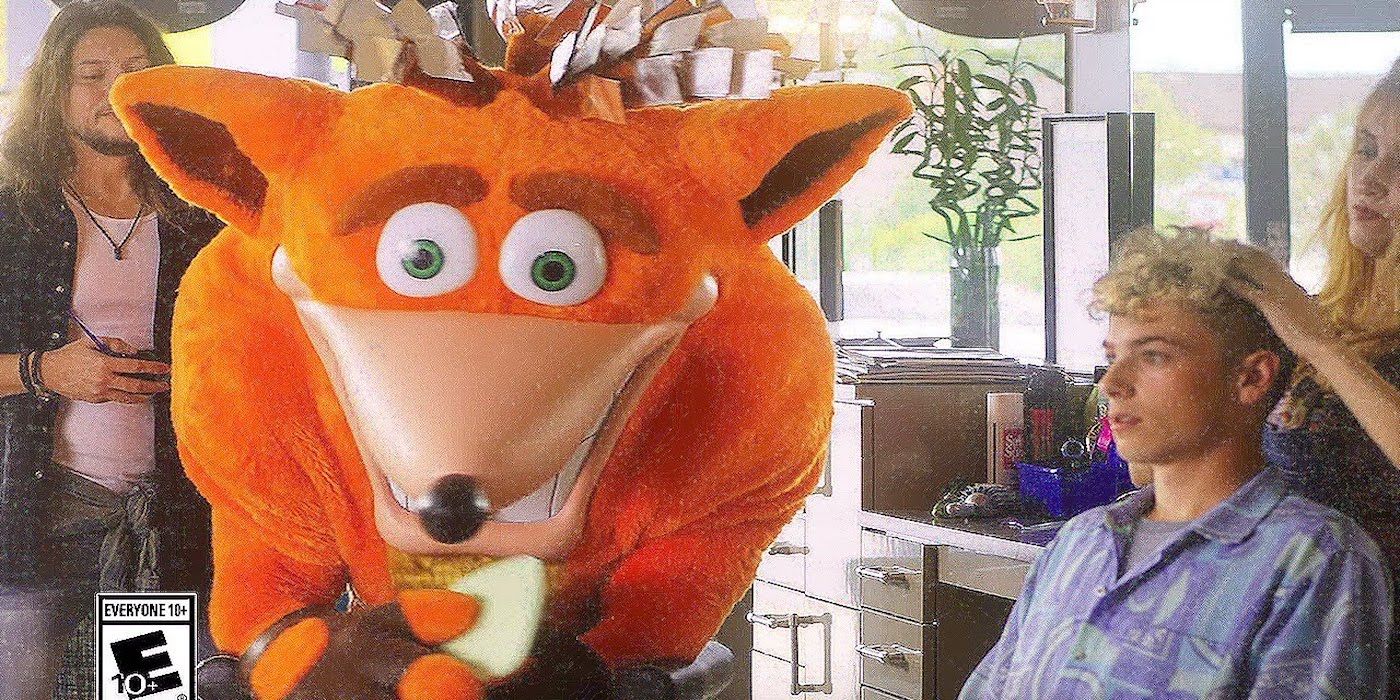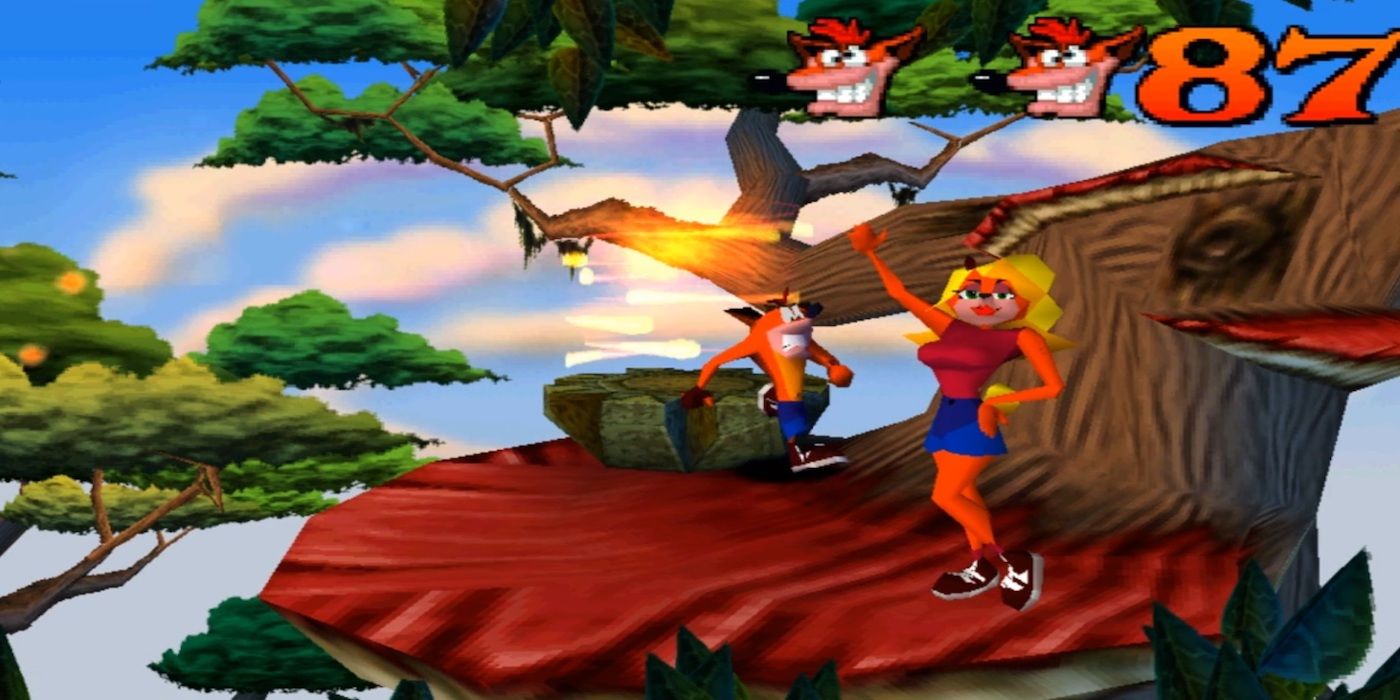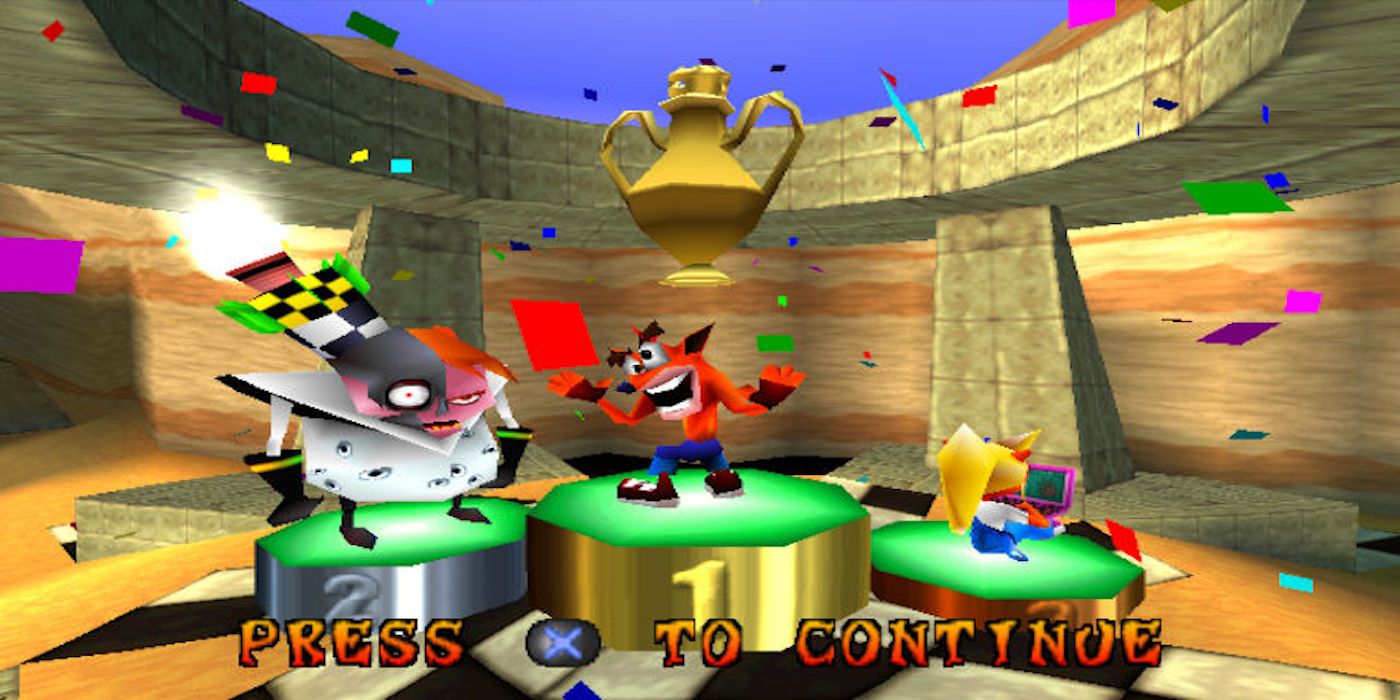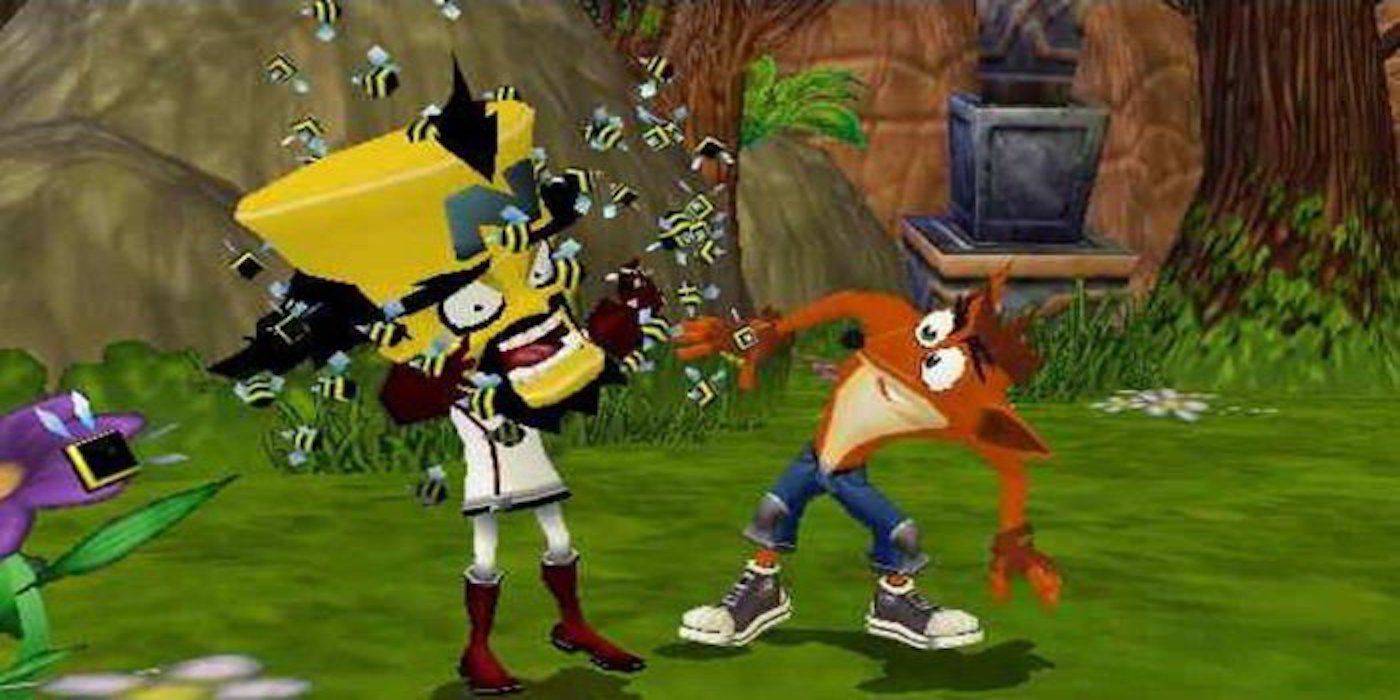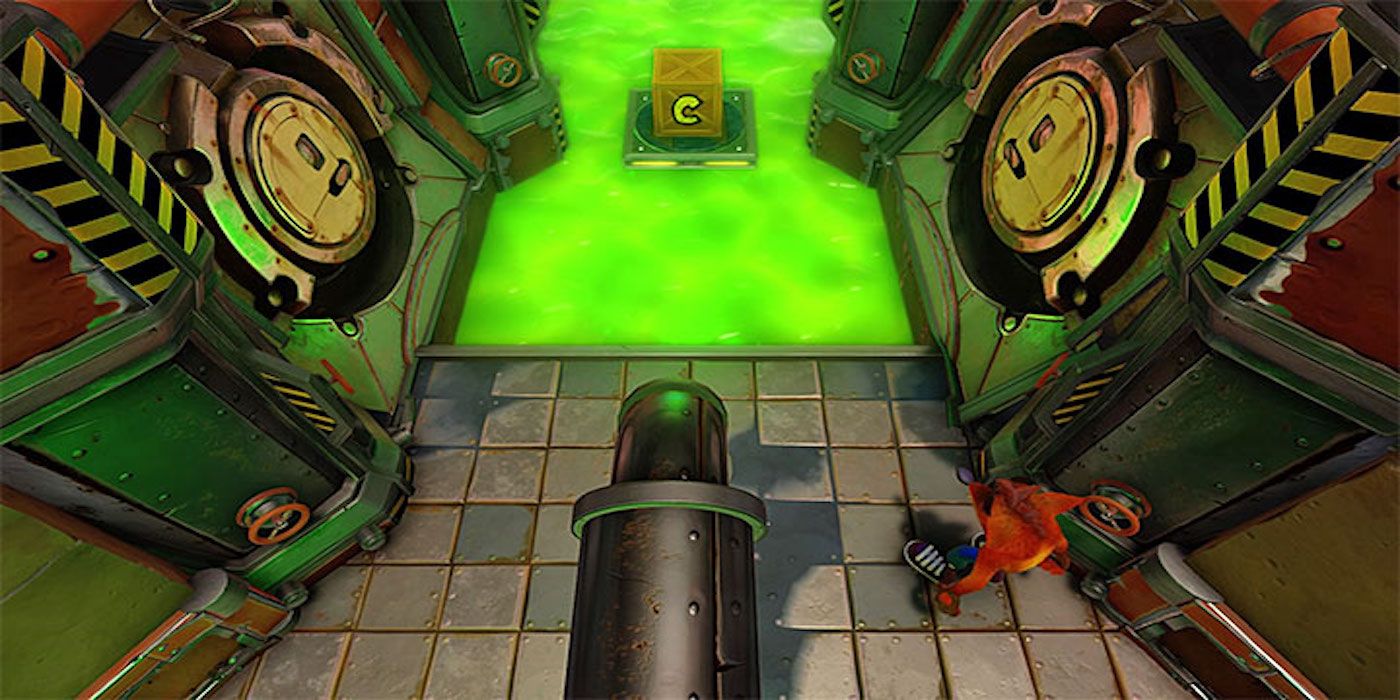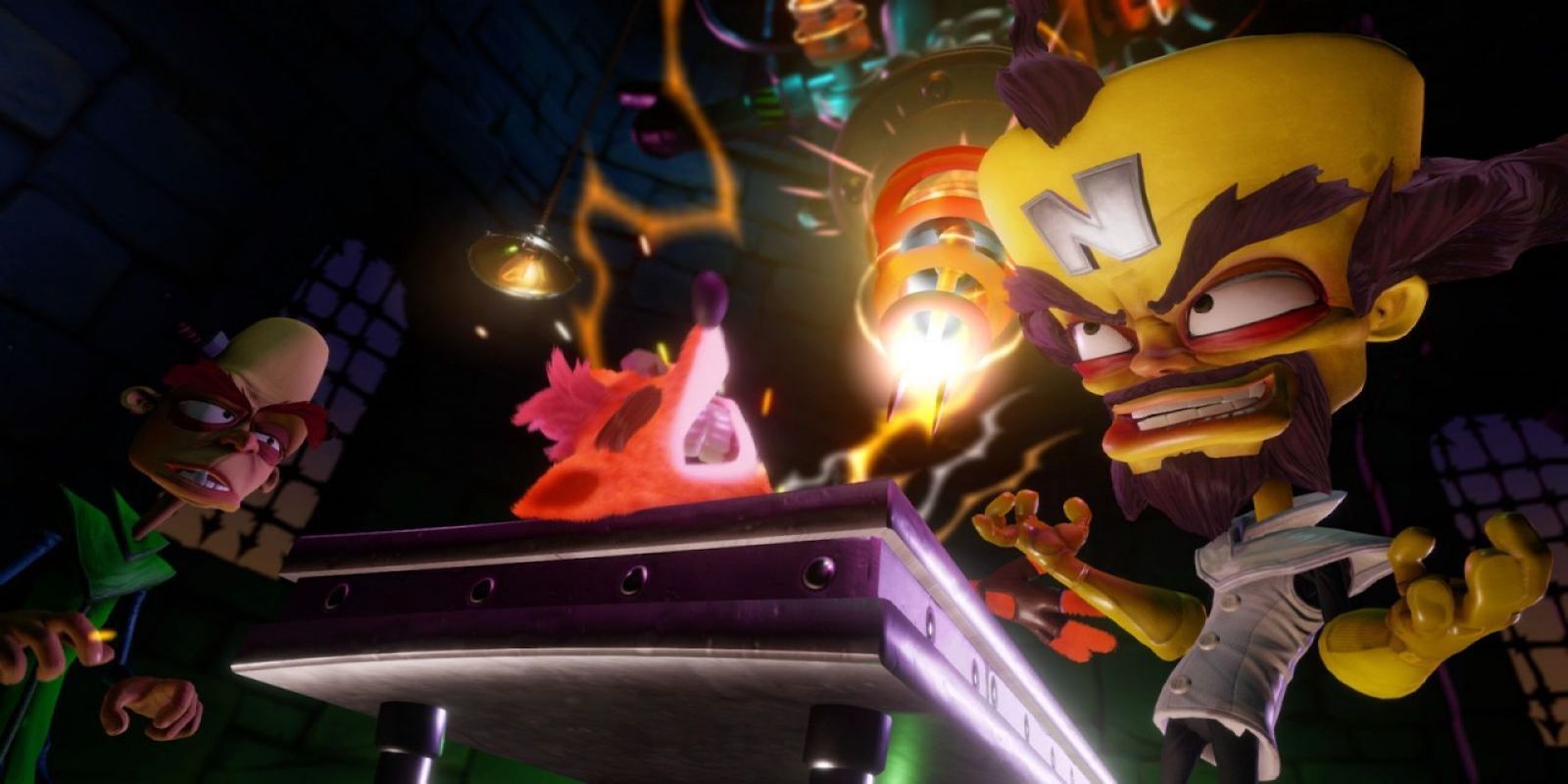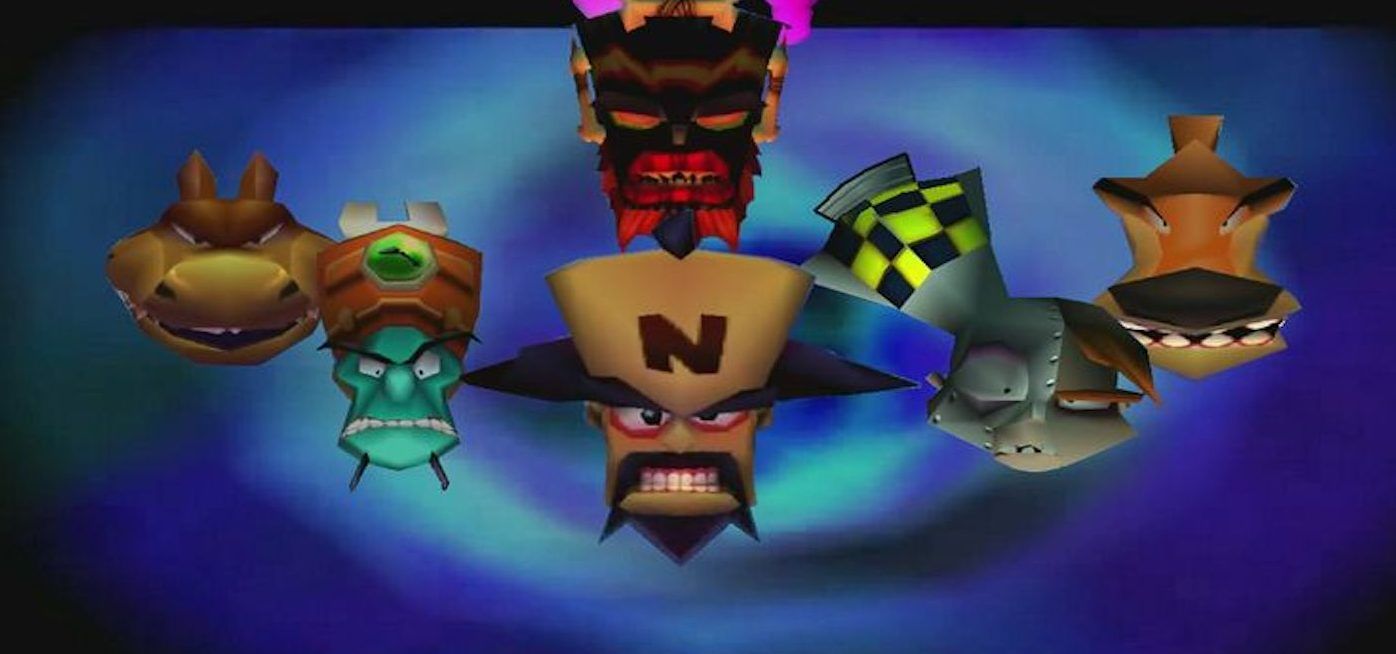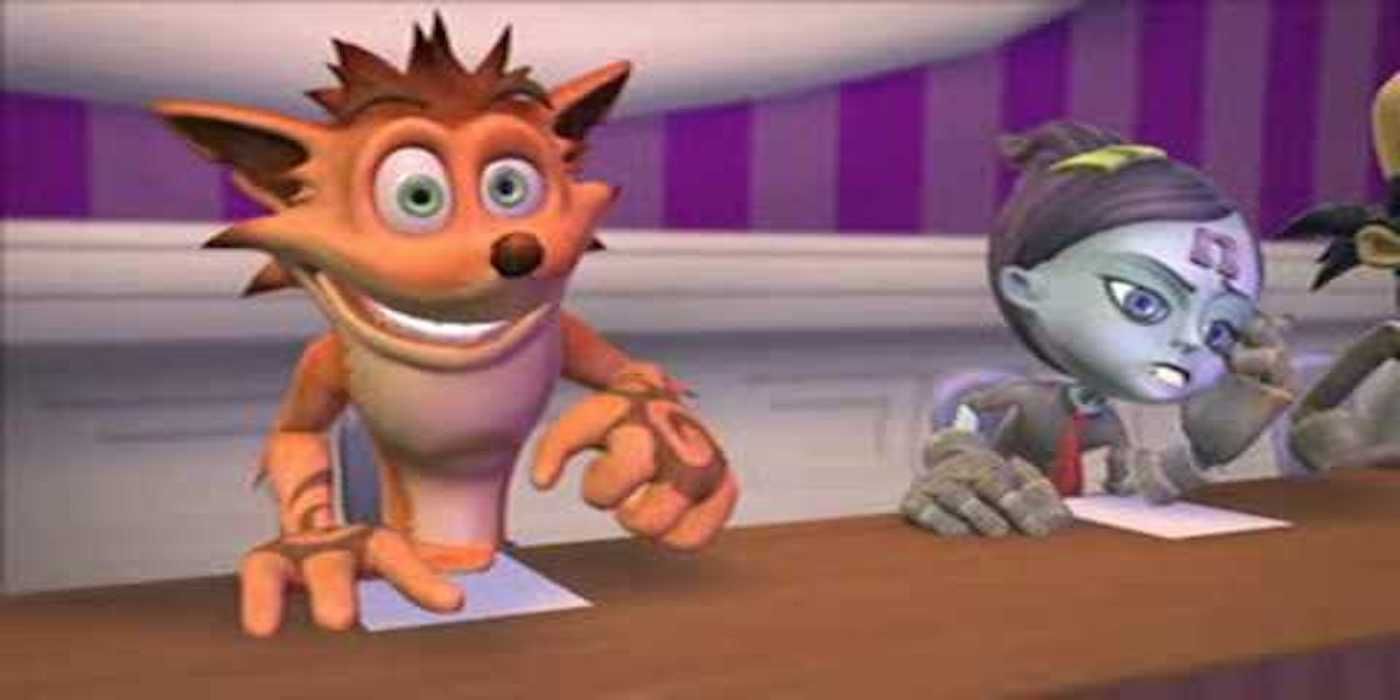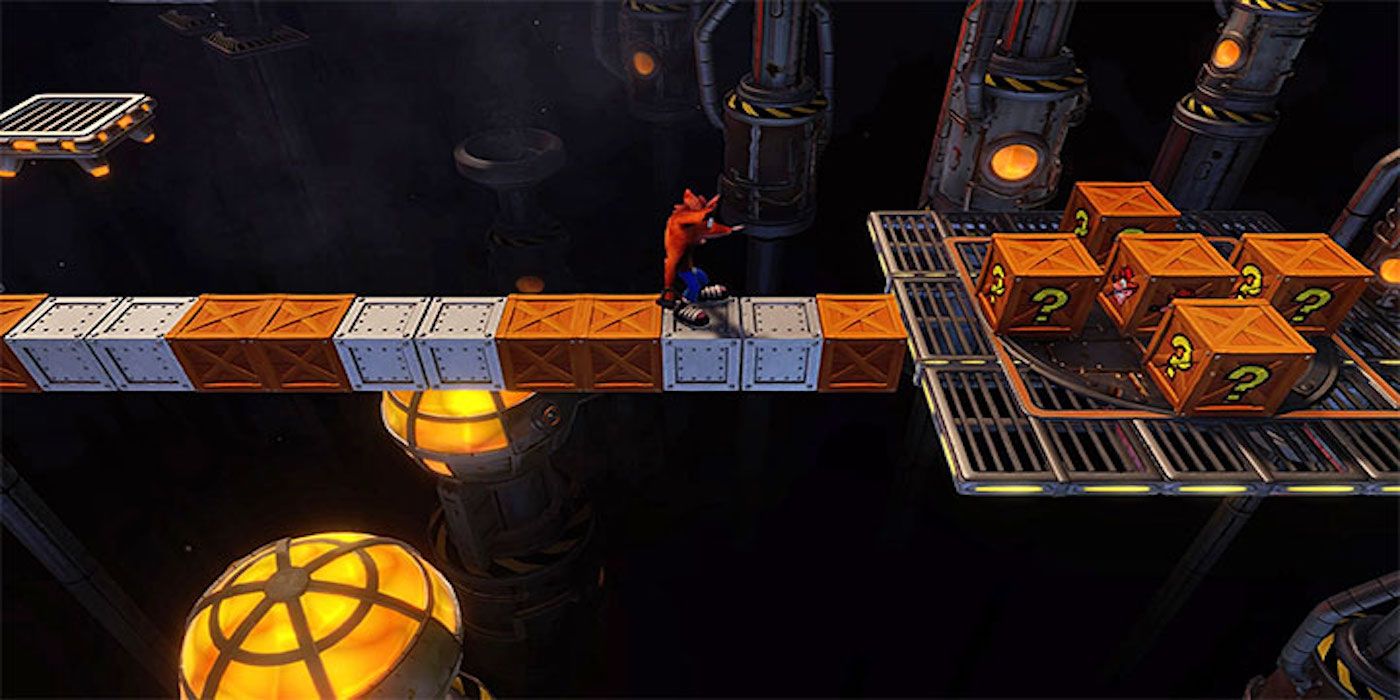Sonic and Mario have always been titans within the video games industry, but it was suddenly a very exciting time when other mascots started to jump into the fray.
It may have taken some time, but the wacky creation from out of Naughty Dog Crash Bandicoot not only found a loving audience, but he also became the PlayStation’s unofficial mascot.
The Crash Bandicoot series started with very humble beginnings, but it’s now a franchise that’s seen over 18 titles on a multi-platform scale, shipping more than 50 million copies worldwide.
The evolution of this reckless bandicoot has seen the character go through a fascinating transformation since his console debut in 1996. The platform hero has slowly found himself in racing titles and party games, fleshing out his resume in the process.
The Crash Bandicoot character went into a hibernation of sorts for a number of years, but seems to have found himself more popular than ever with the recent release of a remake of the original Crash Bandicoot N. Sane Trilogy.
With fandicoots being rabid for more Crash, what better opportunity to dig into some of the lesser known secrets of the video game legend?
Get ready to smash some crates because here are the 15 Things You Didn’t Know About Crash Bandicoot.
Wrath of Cortex Was Originally A Free-Roaming Game
The story behind Crash Bandicoot: Wrath of Cortex is just devastating for die-hard Crash fans. The title began as an ambitious, exciting return to the franchise, but in the end would get caught up in legal battles between publishers, with the beloved bandicoot being the real casualty in all of this.
Wrath of Cortex was intended to be designed by Mark Cerny, the person responsible for designing all of the previous Crash titles. Cerny’s plan was to move the series from its platforming roots into more of a free-roaming game that would fall back on puzzle elements.
The new direction could have certainly been exactly what the stalling series was in need of, but due to Universal Interactive Studios signing a deal with Konami that would turn Crash into a multi-platform character, Sony and Mark Cerny would find themselves falling out of favor with Universal.
This latest development would not only see Wrath of Cortex being forced to become a traditional Crash platformer, but developer Traveller’s Tales were also only given 12 months to finish the game from scratch.
Considering all of this, it’s a surprise that Wrath of Cortex is even halfway decent.
Crash Bandicoot Almost Had An Animated Series
Did those hand-drawn FMV sequences during Crash Twinsanity’s intro and ending ever feel a little unusual and out of place to anyone? Well, they were actually using those animated segments as prototypes in a hypothetical Crash Bandicoot cartoon.
Allegedly, the Crash Bandicoot animated series would have followed much of the same model and style of the Earthworm Jim animated series. Sony, however, adopted the opinion that 3D animation should be there priority at the moment, with this leading to the series effectively being abandoned.
While it’s definitely a bummer that a Crash TV show never got to happen, a two-volume manga based on Crash Bandicoot 2: Cortex Strikes Back did come out in 1998.
If the pages are flipped really quickly it kind of looks like a cartoon. That being said, sporadic appearances by Crash (as well as Spyro) in the Skylanders Academy series might be evidence of the waters being tested for a possible new Crash series.
A Full-Fledged Crash and Spyro Team-Up Crossover Has Happened
Speaking of Spyro, remember the time that the Crash and Spyro officially joined forces to take on the combined efforts of Cortex and Ripto? No? Well prepare for some minds to be blown.
Crash and Spyro were both some of the more popular PlayStation mascots, and thus slowly found themselves cameoing in each other’s titles as some welcome fan service.
In 2004, Vicarious Visions wanted to try something different with both of these respective titles, attempting a massive crossover event in the process. The results are Crash Bandicoot Purple: Ripto’s Rampage and Spyro Orange: The Cortex Conspiracy, two connective titles for the Game Boy Advance.
These games see the main antagonists from the Crash and Spyro series, Cortex and Ripto, joining forces and pitting Crash and Spyro against one another.
More companies really ought to try out things like this. Imagine a Metroid game where you fight a bunch of bosses from the Kirby games. While the games themselves may be flawed, these are still worth checking out for the spectacle alone.
Crash’s Creators Have A Mixed Opinion on the Post-Naughty Dog Titles
Naughty Dog, the people responsible for Crash’s creation and his pivotal first few games, aren’t the biggest fans of the titles that followed their releases.
The development of the Crash franchise saw a shift to developers like Traveller's Tales, Vicarious Visions, and Radical Entertainment, with them all seeing varying degrees of success with the property.
Jason Rubin has spoken about not being a fan of the later games in the Crash series, but Naughty Dog co-president Evan Wells has been especially emotional on the subject. On the topic of other developers taking over the Crash mantel, Wells has compared the experience to being "a little bit like watching your daughter do porn."
Putting these extreme opinions aside, not everyone from Naughty Dog looks at the later Crash games as negative wastes of time. In fact, character designer Charles Zembillas was impressed with Radical’s character designs to the point that he expressed desire to work with them.
Andy Gavin, Crash’s co-creator, has also been generous towards Crash Bash and how it taps into the same energy of the original titles.
Crash Was Originally A Character Named Willy the Wombat
Crash Bandicoot might now be one of the most recognizable video game characters out there, but his creation process saw him going through a number of detours that nearly had him turning out very different.
Before Naughty Dog even had a main character for their game, the title was jokingly code-named “Sonic’s Ass Game” due to the camera being constantly tethered behind the character.
Once it was time to start thinking about a protagonist, Naughty Dog recruited artists Charles Zembillas and Joe Pearson to create their game's main character. Their efforts led to the creation of "Willy the Wombat," a character who didn't look that far off from the final Crash designs.
In a fine example of studio meddling, Universal's marketing director told the team that the character needed to be named either "Wuzzles," "Wizzy," or "Wez."
Naughty Dog proceeded along, but after reaching the breakthrough that their character should destroy crates, they changed his name to Crash Bandicoot to reflect his new action (“Dash,” “Bash,” and “Smash” were also brought up as alternatives).
While Universal were still not crazy about the new name, they were allowed to move forward with it.
A Failed Reboot Was Planned in 2010, Known as Crash Landed
Radical Entertainment was developing a fourth Crash title after their last release Mind Over Mutant. Due to mixed reception over past releases, this game was meant to be a reboot of the Crash series and bringing it back to its roots.
Sadly, Crash Landed (also known as Crash Bandicoot 2010) was cancelled before the public even knew that it was something to get excited over. The game, which would have seen releases for the XBOX 360, PlayStation 3, Wii, and DS, was in development for two years before Activision ultimately pulled the plug.
After Activision heard that Sony was looking to reacquire the rights to publish the Crash franchise, they laid off the game’s entire development team and moved onto Prototype 2.
While information is scarce, it appears that Crash Landed would have focused on Crash rescuing his imprisoned non-transformed bandicoot pals (known internally as "bandicutes") from Doctor Neo Cortex and Dingodile.
Radical thought hard about how to re-invent the character and what classical ideas and visual styles to retain. This iteration of Crash apparently would had a much more expressive face, as well as a wide variety of gadgets and weapons at his disposal-- like a frogzooka.
There Were Almost Crash Bandicoot-Themed Rides at Universal Studios
Wouldn’t it be something if people could kick back at Universal Studios Hollywood and go on a rollercoaster that’s getting chased by a giant boulder? What about racing a bunch of polar bear and tiger go-karts through some breakaway crates?
Well those beautiful dreams may never come to be, but there was a time during peak Crash popularity in the ‘90s that Crash attractions were almost a reality.
Naughty Dog was developing their Crash titles for Universal Interactive Studios, a branch of Universal Studios. This saw Crash Bandicoot in the unique situation of Universal having a theme park at their disposal and therefore the ability to use their more popular characters there.
Unfortunately, when Universal Interactive Studios licensed Crash out to Sony, it slowly led to the kibosh on ideas like this and a Crash animated series due to differences in opinions arising.
While Crash rides never got to happen, the theme parks did still have people dressed in Crash costumes roaming the grounds.
Tawna Went Through Drastic Changes, Leading to Her Complete Removal
The original Crash Bandicoot sees Crash chasing after the shapely Tawna as some sort of sexualized brass ring at the end of his efforts. However, this wasn’t Naughty Dog’s intention with the character at all.
In fact, Tawna was originally designed as a much more wholesome bandicoot until Naughty Dog was forced to redesign her into the more demeaning piece of eye candy. Unsurprisingly, the new character designs drew a number of complaints from Universal Interactive over how the “adult” character seems out of place in a family game.
This, in tandem with Sony of Japan requesting a more family-friendly sidekick for Crash in the second game, led to them abandoning Tawna completely and introducing Coco in her place.
Everyone is happy for Coco’s existence, but it’s a shame that Tawna had to be degraded so much as a character, only for these changes to turn her into a pariah in the Crash community.
It’s a small step forward, but in the new N. Sane Trilogy, Tawna is depicted with a little more “realistic” proportions as well as being a more competent character. Still, nobody should be holding their breath for the announcement of Tawna Bandicoot: Pinstripe’s Revenge.
Crash Team Racing Started as Original Racing IP
After Naughty Dog impressed Universal Interactive Studios with their 3DO title, Way of the Warrior, they were signed to a three-game contract with the publisher. These games would, of course, become the first three Crash Bandicoot titles.
However, after the completion of Crash 2, Naughty Dog found themselves in a unique situation. The team had developed an original racing property that featured blockheaded characters, but they felt it would be aided by the use of the Crash license.
They took their racing pitch to Sony and were accordingly given permission to develop another game for Universal and to turn this engine into Crash Team Racing. If Sony hadn’t gone with their proposal, Naughty Dog was prepared to continue forward with the title being a non-Crash racer.
Curiously, in the initial development stages of the game, Naughty Dog tested out their proof of concept by recreating Diddy Kong Racing’s “Crescent Island” course to determine how well the PlayStation could handle such a task.
Crash Team Racing would be such a success that another four Crash racing games were released through the years, proving itself as a viable “spin-off.”
Crash Twinsanity Began As Crash Evolution, A Platformer/RPG Hybrid
Much like the troubled production history that took place on Wrath of Cortex, Crash Twinsanity would also experience a number of changes, turning it into a shell of its original vision.
To begin with, the title was originally conceived as Crash Evolution and was meant to be the Bandicoot’s first platformer/RPG hybrid. Crash Evolution’s title was a reference to the series going in new directions, with many of the levels meant to be areas that were not typically seen in platformers.
Crash Evolution was originally conceived as a Gamecube game, but with the console appearing to be too limiting, it was reworked into Twinsanity and moved to the PlayStation 2 and XBOX.
This then saw the game's development going back to the drawing board after a year of work, with the new strategy being to focus on the humor within Crash and Cortex's relationship.
The levels were in turn shifted to more cartoonish environments to reflect this new tone, too. It’s almost a little insulting that the concept art for the less broad version of all of this is actually included in the game as a reward.
The First Crash Levels Developed Were Deemed Too Difficult
The early Crash Bandicoot titles made a name for themselves on their difficult and often frustrating platforming challenges.
It’s one thing to simply help Crash make his way to the end of a level, but the more extravagant tasks like completing all of the bonus rooms and achieving over 100% truly test the patience of even the most skilled gamers.
As the Crash series would grow and evolve, it would naturally look for even more ways to re-invent platforming and new ways to be challenging.
Even before Naughty Dog was looking to push gamers’ to their absolute limits, their very first attempts at Crash Bandicoot levels ended up being some of the most difficult in the entire game. If that isn’t a telling statement on their level design, then what is?
The first three levels that Naughty Dog came up with were "Cortex Power," "Generator Room," and "Heavy Machinery."
Rather than scaling these levels back in difficulty and resorting to easier designs, the team instead decided to move them to the game’s final world. Naughty Dog would effectively work backwards to figure out the more rudimentary design of the game’s introductory jungle levels.
Mark Mothersbaugh Did the Soundtrack for the Original Crash Games
Music is such a crucial component to video games that can often end up going overlooked. Naughty Dog was looking to go all out with Crash Bandicoot, with one of the major pushes being to get some considerable talent on the game’s soundtrack.
Accordingly, the efforts of Josh Mancell and the production company, Mutato Muzika were enlisted to handle the game’s soundtrack. Mutato Muzika is the collective that’s run by Mark Mothersbaugh of Devo fame and their work is consistently astounding.
Mothersbaugh is a prolific name in the music industry, handling the soundtracks for all of Wes Anderson films, as well as Phil Lord and Chris Miller’s efforts.
Naughty Dog’s relationship with Mothersbaugh and Mutato Muzika would remain pleasant, with them not only continuing to work together for the rest of their Crash games, but also teaming up again for the Jak and Daxter series.
So much of the chaotic style and personality of Crash Bandicoot is reflected through the game’s music, and Mothersbaugh perfectly taps into that to create something special.
Crash Bandicoot Took Ideas From Naughty Dog’s Canceled AI O. Saurus and Dinestein
During the infancy of Naughty Dog and the early beginnings of Crash Bandicoot, there was plenty of troubleshooting over what’s the right direction for the game.
Some of the most recognizable aspects of the Crash games are the bizarre hybrid designs of its villains, as well as the series’ time-hopping frenetic nature. Believe it or not, though, those were concepts associated with another Naughty Dog game entirely.
Before Naughty Dog had signed on with Universal Interactive Studios to begin developing Crash, they had the idea for a 2D sidescroller called AI O. Saurus and Dinestein.
The game would have featured dinosaur/evil scientist hybrids that were travelling through time, with the game leaning heavily into being a Back to the Future and Jurassic Park spoof.
Once signing on with Universal, Naughty Dog’s entire focus was moved onto Crash, meaning O. Saurus and Dinestein was dropped, but many of the game’s ideas found their way migrating over to Wumpa Island.
For what it’s worth, if Naughty Dog had never signed on with Universal, there would be no Crash Bandicoot, but they would have at least fleshed out O. Saurus and Dinestein to completion.
Crash Bandicoot Was the Mascot For Leukemia & Lymphoma Society’s “School and Youth” Programs
Crash’s charity work is certainly one of the more confusing additions here, but it’s still certainly worth commending.
The plucky bandicoot might have been keeping the universe safe from the likes of Doctor Neo Cortex for decades now, but a lot of people don’t know that he’s also a huge opponent to malignant blood disease.
In 2007, Vivendi and Sierra formed an alliance with the Leukemia & Lymphoma Society’s “School & Youth” program to officially make Crash Bandicoot the face and mascot for the cause.
The organization is devoted to educating children and raising both money and awareness across the United States regarding leukemia, lymphoma, and myeloma.
A partnership of this variety is especially sweet, but it’s a little ridiculous that the timing of it all seems to render the generous alliance as some sort of advertisement for 2007’s Crash of the Titans, a sub-par video game.
Regardless of the motivations behind the move, Mark Halacy, Executive Vice President of Human Resources for Vivendi Games, goes as far t add: "Crash is a bandicoot with a big heart; he's brave, he's loyal and he's always ready for a good fight and a great cause."
The Crate Concept Was Added Due to Hardware Limitations
Love them or hate them, those pesky crates that dominate the stages and bonus rooms of the Crash Bandicoot games are an unavoidable presence. That’s why it’s so crazy that these fundamental items were such an afterthought to the series and only decided on because of the limitations of the PlayStation console.
Essentially, during Crash’s development in 1995, Jason Rubin realized that there was too much open "dead" space in levels. This was a result of the PlayStation not being able to render multiple on-screen enemies at the same time.
Additionally, test players were also solving the game’s puzzles too quickly. Rubin’s answer to this was adding crates to the experience, which would fill in any empty spots in the levels, while simultaneously offering up additional difficulty.
The first crate was added into the game in January of 1996, and it wasn't much longer until it became the defining gameplay aspect of the series, as well as Crash's namesake.
The crates were also the final major touch added to Crash Bandicoot before Sony would agree to publish the game in March of 1996.
---
Clearly there are any other interesting Crash Bandicoot tidbits out there that we forgot? Now’s the time to sound off in the comments!

